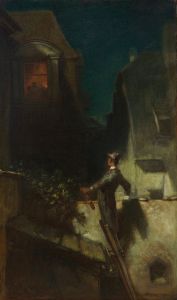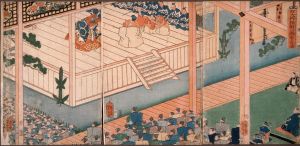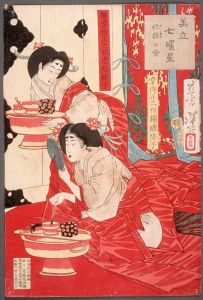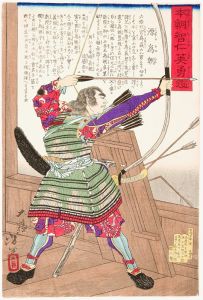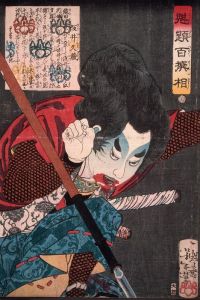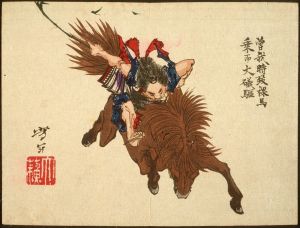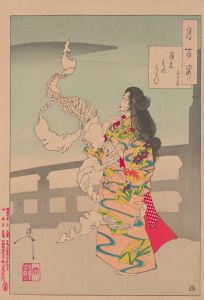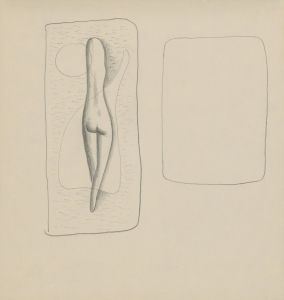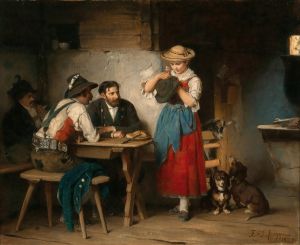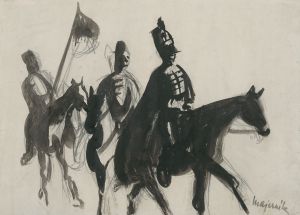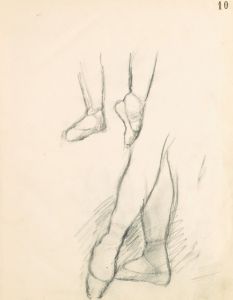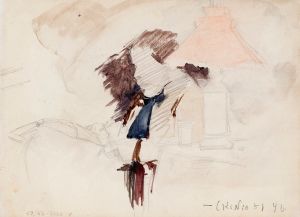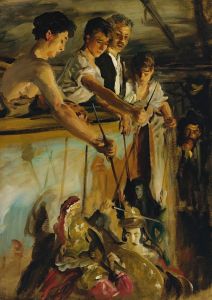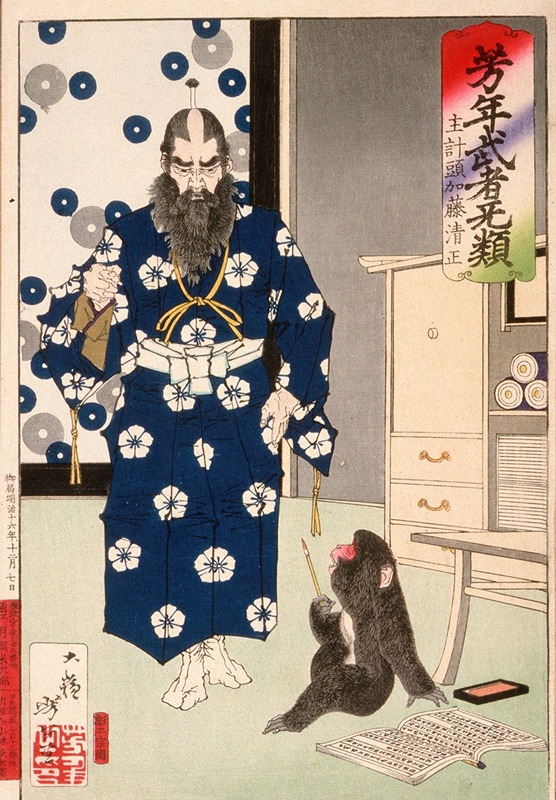
Kazuenokami Katō Kiyomasa Observing a Monkey with a Writing Brush
A hand-painted replica of Tsukioka Yoshitoshi’s masterpiece Kazuenokami Katō Kiyomasa Observing a Monkey with a Writing Brush, meticulously crafted by professional artists to capture the true essence of the original. Each piece is created with museum-quality canvas and rare mineral pigments, carefully painted by experienced artists with delicate brushstrokes and rich, layered colors to perfectly recreate the texture of the original artwork. Unlike machine-printed reproductions, this hand-painted version brings the painting to life, infused with the artist’s emotions and skill in every stroke. Whether for personal collection or home decoration, it instantly elevates the artistic atmosphere of any space.
Tsukioka Yoshitoshi (1839–1892) was a renowned Japanese artist known for his work in the ukiyo-e genre of woodblock prints and paintings. He is often celebrated for his innovative approach to traditional Japanese art, particularly during the Meiji era, a time of significant cultural and political change in Japan. Yoshitoshi's work is characterized by its dynamic composition, vivid use of color, and often dramatic subject matter, which frequently includes historical and mythical themes.
One of Yoshitoshi's notable works is "Kazuenokami Katō Kiyomasa Observing a Monkey with a Writing Brush." This piece is part of his series "Tsuki hyakushi" (One Hundred Aspects of the Moon), which was published between 1885 and 1892. The series is considered one of Yoshitoshi's masterpieces, showcasing his mature style and his ability to blend traditional Japanese themes with a modern sensibility.
The print depicts Katō Kiyomasa (1562–1611), a famous samurai and military commander during the Azuchi-Momoyama and early Edo periods. Kiyomasa was known for his role in the invasions of Korea and his contributions to the construction of several castles, including the iconic Kumamoto Castle. He was a loyal retainer of Toyotomi Hideyoshi and later served under Tokugawa Ieyasu.
In the artwork, Kiyomasa is shown observing a monkey holding a writing brush. This imagery is rich with symbolism and reflects the cultural and historical context of the time. Monkeys in Japanese art and folklore are often depicted as clever and mischievous creatures, sometimes serving as messengers or intermediaries between humans and the divine. The act of a monkey holding a writing brush could symbolize the transmission of knowledge or the blurring of boundaries between the animal and human worlds.
Yoshitoshi's choice to include this scene in his series highlights his interest in exploring the interplay between historical figures and mythical or folkloric elements. The moon, a recurring motif in the series, is often associated with mystery, enlightenment, and the passage of time, adding another layer of meaning to the work.
Yoshitoshi's "One Hundred Aspects of the Moon" series was produced during a period of significant transition in Japan, as the country was opening up to Western influences and undergoing rapid modernization. Despite these changes, Yoshitoshi remained committed to traditional Japanese aesthetics, while also incorporating new techniques and perspectives into his art. This blend of old and new is evident in "Kazuenokami Katō Kiyomasa Observing a Monkey with a Writing Brush," which captures the essence of Yoshitoshi's artistic vision.
The print is a testament to Yoshitoshi's skill as an artist and his ability to convey complex themes through his work. It remains a valuable piece for those interested in Japanese art, history, and the cultural shifts of the Meiji era. Through his innovative approach and dedication to his craft, Yoshitoshi has left a lasting legacy that continues to be appreciated by art enthusiasts and scholars alike.





